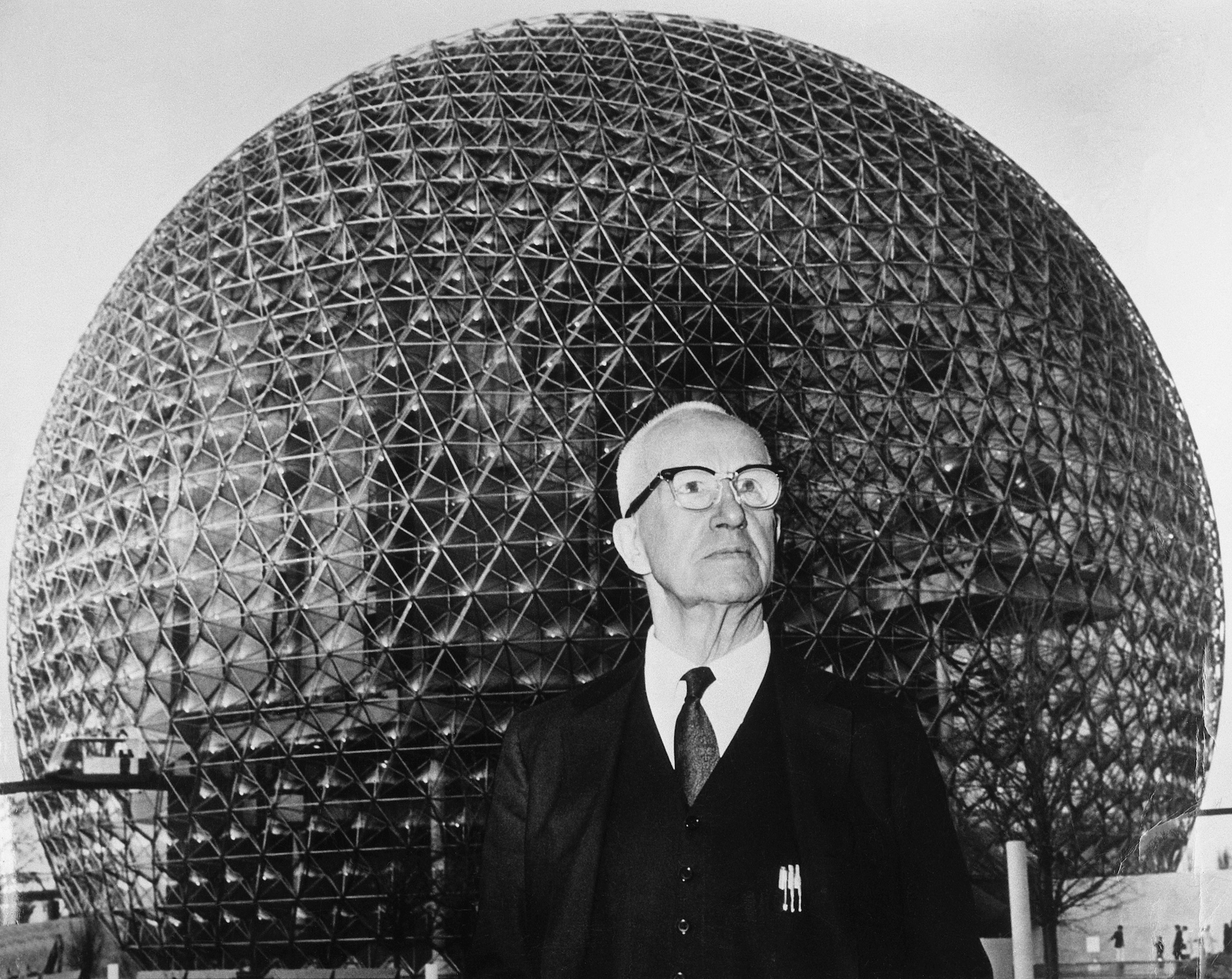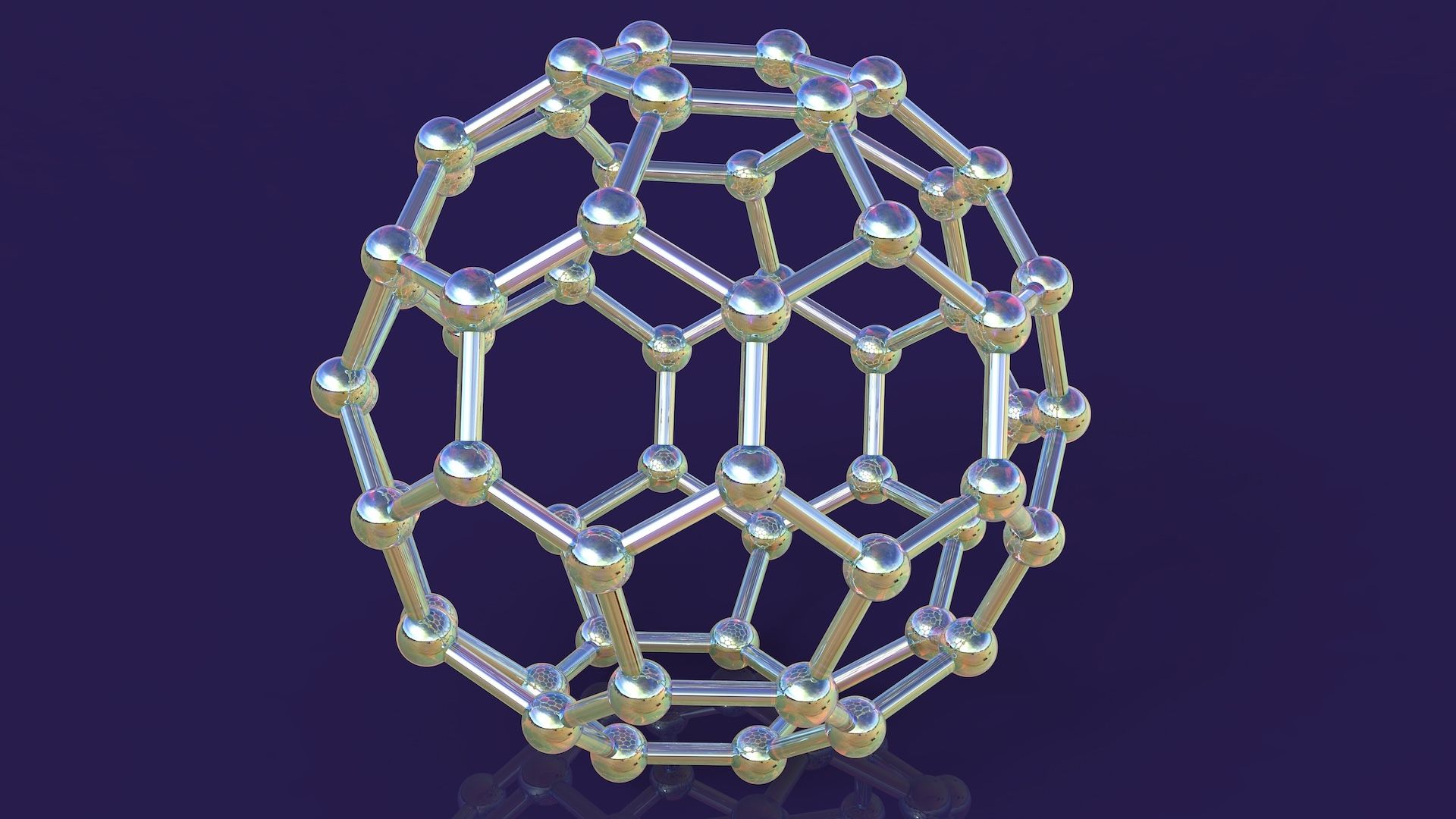QUICK FACTS
Milestone: ‘Buckyballs’ discovered and described
Date: Nov. 14, 1985
Where: Rice University, Houston, Texas
Who: Harry Kroto, Richard Smalley and Robert Curl
Over a feverish 10-day period in 1985, scientists conceived of a new molecule of perfect symmetry — and named it after one of the 20th century’s most famous inventors and futurists.
But radio and light-based data from this interstellar medium suggested there were many more long carbon-chains than should have been possible given the astrophysical molecular synthesis theories of the time. Scientists began to wonder whether cooling red giant stars were pumping the interstellar medium full of these six to eight carbon chains.
The eureka moment for Kroto was a visit to the Rice University laboratories of chemists Robert Kurl and Richard Smalley. Smalley had a special apparatus in which a laser beam vaporized atoms on the surface of a metal disk, then swept them up into a helium cloud and a vacuum to cool them, finally analyzing their makeup using another laser.
Kroto began to wonder if they could simulate the outer shells of cool red giants by swapping out the metal disk for one made of graphite, a form of carbon.
Over the first 10 days of September, the trio, along with graduate students Sean O’Brien, and Jim Heath, produced the six-to-eight-carbon chains that supported the red giant theory.
But there were some interlopers: strange forms of carbon made up of 60 carbon atoms, and a smaller concentration of an even-larger byproduct made up of 70 carbon atoms. These “uninvited guests,” as Kroto called them, had actually been found in an experiment from Exxon Corporate Research Science Laboratory in New Jersey about a year earlier, but no one had paid them much attention.
After days of working, on Sept. 9, the team came to a conclusion about its structure. “C60 appeared to be really quite unreactive, а behavior difficult to reconcile with a flat hexagonal graphene sheet-the most obvious first thought,” Kroto said.
In theory, a flat graphene sheet would have had tons of dangling bonds that would make it more reactive.
For many days, the scientists worked with toothpicks and jellybeans, paper cutouts of hexagons and pentagons, and other “low-tech” modeling solutions to try to puzzle out the structure of this 60-carbon molecule.
Kroto thought back to the 1967 Expo in Montreal, where 20th-century futurist and inventor Buckminster Fuller was showcasing a geodesic dome, a spherical structure with a network of triangles on its surface, which he had patented in the 1950s. Smalley went to his office to grab a book detailing Fuller’s work, and they figured out the proposed structure.

The resulting compound, which they named buckminster fullerene, was a molecule of incredible symmetry. The paper describing their new molecule was published Nov. 14, 1985 in the journal Nature, and they were soon nicknamed buckyballs.
Over the next few years, the team deduced the properties of the class of closed molecules, called fullerenes. And by 1990, scientists had figured out that by putting an electric arc between two sticks of carbon, they could produce scads of buckyballs.
Kroto, Smalley and Curl won the 1996 Nobel Prize in Chemistry for their discovery and characterization of buckyballs.
Fullerenes as a class have proven useful, and chemical relatives of buckyballs, called nanotubes, are super strong and have high thermal and electrical conductivity. These nanotubes have become crucial in atomic force microscopes, batteries, coatings and biosensors. But though scientists have proposed using buckyballs in everything from quantum computing to drug delivery, they have yet to find their niche in mainstream applications.

